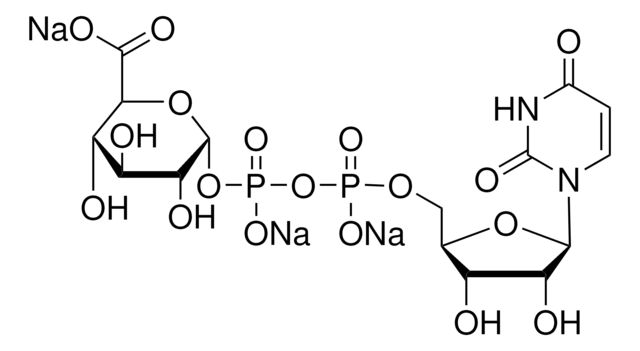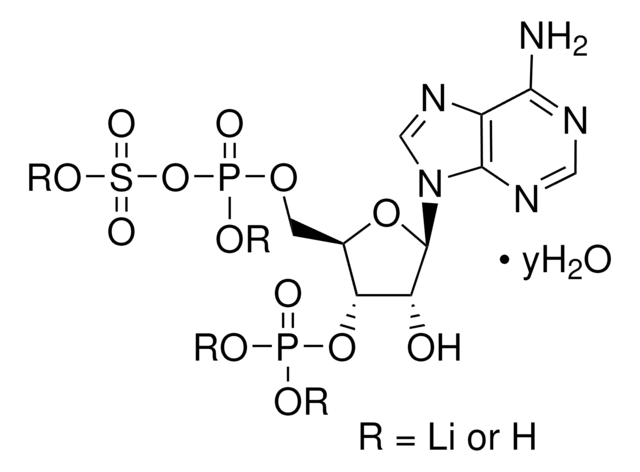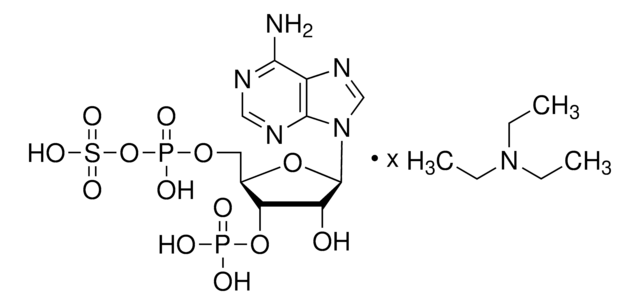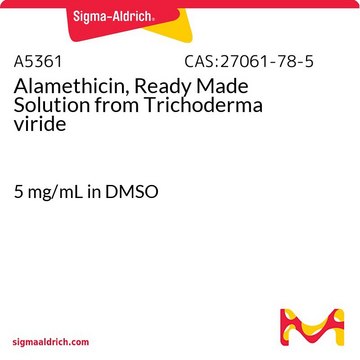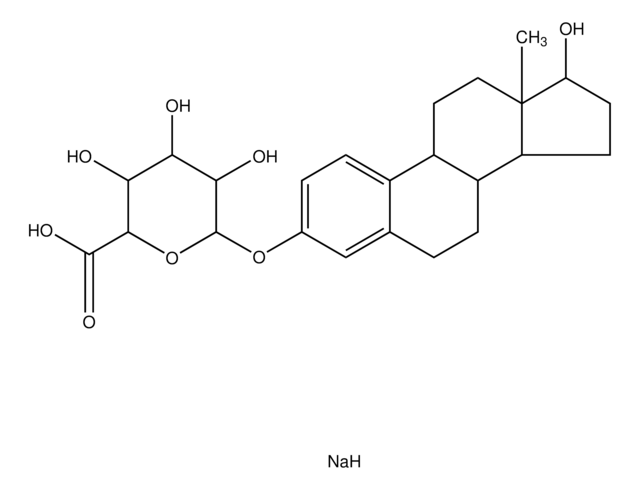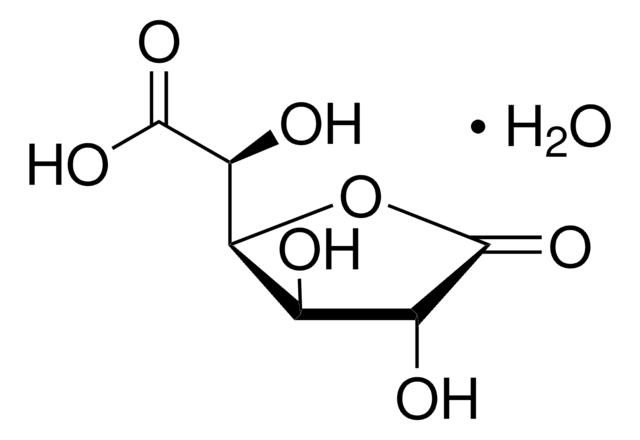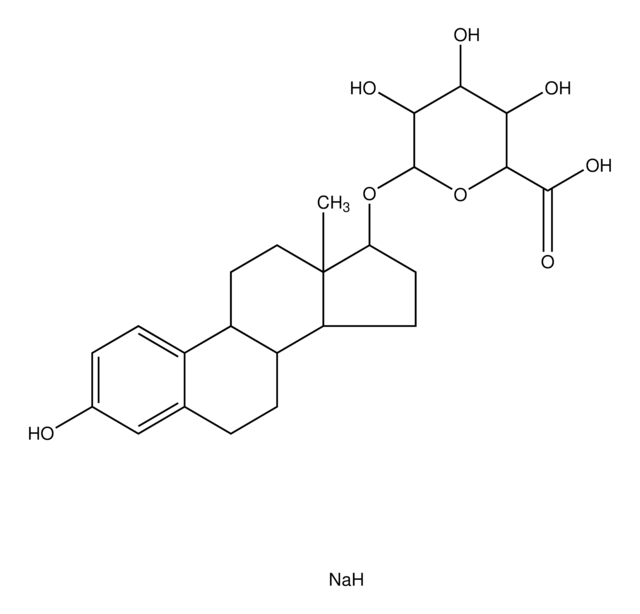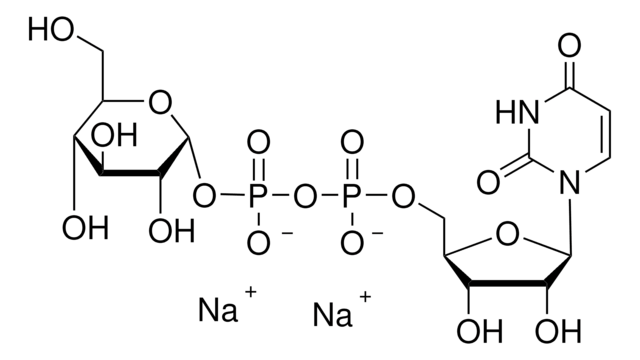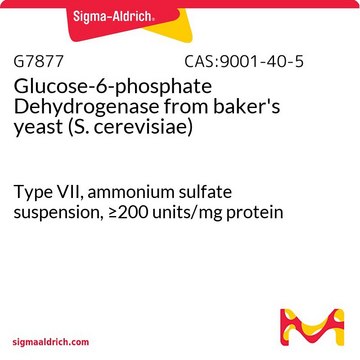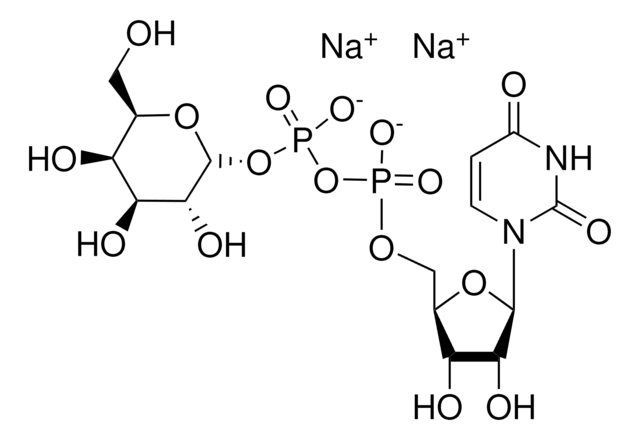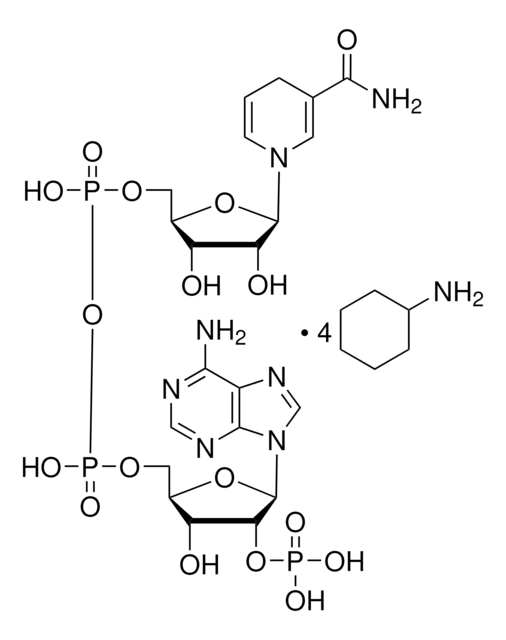U5625
Uridine 5′-diphosphoglucuronic acid ammonium salt
98-100%
Sinonimo/i:
UDP-GlcA, UDPGA, Uridine-diphosphate-glucuronic acid ammonium salt, Uridine[5′]diphospho[1]-α-D-glucopyranosuronic acid ammonium salt
About This Item
Prodotti consigliati
Origine biologica
Saccharomyces cerevisiae
enzyme from bovine liver (catalase)
enzyme from rabbit muscle (LDH)
Livello qualitativo
Saggio
98-100%
Stato
powder
Temperatura di conservazione
−20°C
Stringa SMILE
N.O[C@@H]1[C@@H](O)[C@H](O[C@@H]([C@H]1O)C(O)=O)OP(O)(=O)OP(O)(=O)OC[C@H]2O[C@H]([C@H](O)[C@@H]2O)N3C=CC(=O)NC3=O
InChI
1S/C15H22N2O18P2.H3N/c18-5-1-2-17(15(26)16-5)12-9(22)6(19)4(32-12)3-31-36(27,28)35-37(29,30)34-14-10(23)7(20)8(21)11(33-14)13(24)25;/h1-2,4,6-12,14,19-23H,3H2,(H,24,25)(H,27,28)(H,29,30)(H,16,18,26);1H3/t4-,6-,7+,8+,9-,10-,11+,12-,14-;/m1./s1
WMWKTCPGFOEPBD-YGIWDPDDSA-N
Descrizione generale
Applicazioni
Azioni biochim/fisiol
Avvertenze
Warning
Indicazioni di pericolo
Consigli di prudenza
Classi di pericolo
Eye Irrit. 2 - Skin Irrit. 2 - STOT SE 3
Organi bersaglio
Respiratory system
Codice della classe di stoccaggio
11 - Combustible Solids
Classe di pericolosità dell'acqua (WGK)
WGK 3
Punto d’infiammabilità (°F)
Not applicable
Punto d’infiammabilità (°C)
Not applicable
Dispositivi di protezione individuale
Eyeshields, Faceshields, Gloves, type P2 (EN 143) respirator cartridges
Scegli una delle versioni più recenti:
Possiedi già questo prodotto?
I documenti relativi ai prodotti acquistati recentemente sono disponibili nell’Archivio dei documenti.
I clienti hanno visto anche
Articoli
The presence of multiple functional groups and stereocenters in complex carbohydrates makes them challenging targets for the organic chemist.
Glycosyltransferases were initially considered to be specific for a single glycosyl donor and acceptor, which led to the one enzyme-one linkage concept. Subsequent observations have refuted the theory of absolute enzymatic specificity by describing the transfer of analogs of some nucleoside mono- or diphosphate sugar donors.
Il team dei nostri ricercatori vanta grande esperienza in tutte le aree della ricerca quali Life Science, scienza dei materiali, sintesi chimica, cromatografia, discipline analitiche, ecc..
Contatta l'Assistenza Tecnica.